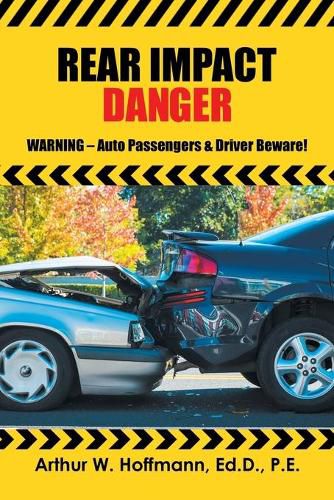Readings Newsletter
Become a Readings Member to make your shopping experience even easier.
Sign in or sign up for free!
You’re not far away from qualifying for FREE standard shipping within Australia
You’ve qualified for FREE standard shipping within Australia
The cart is loading…






This title is printed to order. This book may have been self-published. If so, we cannot guarantee the quality of the content. In the main most books will have gone through the editing process however some may not. We therefore suggest that you be aware of this before ordering this book. If in doubt check either the author or publisher’s details as we are unable to accept any returns unless they are faulty. Please contact us if you have any questions.
Automotive rear impacts are the most common type of car accident, with 2.5 million occuring each year. Most often, the vehicle property damage is minor with no occupant injury. However, more serious rear-end collisions can result in life-changing events. There are two major injury types caused by rear impact accidents. Whiplash (non-lethal injury) and Seat-Collapse (potential serious or lethal injury). Driver and front passenger seats all too often fail, with the seatback collapsing, ejecting the occupants rearward into the rear seat area with serious consequences. Seat design strength requiements are covered by FMVSS 207 Seat Systems Standard. The auto companies rely on this standard to test their seatsdard. The FMVSS 207 standard for seatback strength is flawed auto compaies use this requirement to allow the seatback to deform during a serious rear-impact, to achive enery-management. The controversy over seatback strength, Rigid verus Yielding, continues today. An occupied front seat that collapses during a rear-impact can entrap rear seat occupants, especially children that are required to sit in the rear row seats. Safety advocates and researchers report that for the period 1990 to 2014 nearly 900 children seated behind a front-seated occupant or in a center rear seat died in rear impacts of 1990 and later model-year cars. Law suites are prevalent and multi-million dollar penalties or settlements resulted and litigation continue today. Rear-end crashes also involve vehicle occupants in other automotive design hazards. Use of Child Restraints (CRS) is essentaial.
$9.00 standard shipping within Australia
FREE standard shipping within Australia for orders over $100.00
Express & International shipping calculated at checkout
This title is printed to order. This book may have been self-published. If so, we cannot guarantee the quality of the content. In the main most books will have gone through the editing process however some may not. We therefore suggest that you be aware of this before ordering this book. If in doubt check either the author or publisher’s details as we are unable to accept any returns unless they are faulty. Please contact us if you have any questions.
Automotive rear impacts are the most common type of car accident, with 2.5 million occuring each year. Most often, the vehicle property damage is minor with no occupant injury. However, more serious rear-end collisions can result in life-changing events. There are two major injury types caused by rear impact accidents. Whiplash (non-lethal injury) and Seat-Collapse (potential serious or lethal injury). Driver and front passenger seats all too often fail, with the seatback collapsing, ejecting the occupants rearward into the rear seat area with serious consequences. Seat design strength requiements are covered by FMVSS 207 Seat Systems Standard. The auto companies rely on this standard to test their seatsdard. The FMVSS 207 standard for seatback strength is flawed auto compaies use this requirement to allow the seatback to deform during a serious rear-impact, to achive enery-management. The controversy over seatback strength, Rigid verus Yielding, continues today. An occupied front seat that collapses during a rear-impact can entrap rear seat occupants, especially children that are required to sit in the rear row seats. Safety advocates and researchers report that for the period 1990 to 2014 nearly 900 children seated behind a front-seated occupant or in a center rear seat died in rear impacts of 1990 and later model-year cars. Law suites are prevalent and multi-million dollar penalties or settlements resulted and litigation continue today. Rear-end crashes also involve vehicle occupants in other automotive design hazards. Use of Child Restraints (CRS) is essentaial.